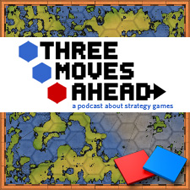Western Civilization’s Crown of Glory is one of those games designed with people like me in mind. It is grand strategy set in a compelling historical period. It has numerous diplomatic options, detailed battles and a basic economic system that doesn’t require lots of micromanagement. It keeps its eye on the big picture and wants players to do the same.
The original design document for this Napoleonic simulation must have been huge. Most projects get trimmed down over the course of development, and Crown of Glory has been in development for six or seven years. And it’s still huge. You play as one of the major powers of Europe in one of four historical settings. In 1792, France has to count on a miracle as the crowned heads of Europe decide to gang up on the fledgling republic. In 1805, Napoleon is creaming every army sent against him, but he has a lot of enemies. Each setting has new challenges for each country.
For the player, the biggest challenge will be trying to understand the interface. Crown of Glory shows its age in the way that information is presented. All of the information you need is there, but it can be hard to find at times and you are never really sure what information you need in a given situation.
There is so much in Crown of Glory that I sometimes had to pause to ask if it was even needed. Take the 1805 setting. The priority for everyone fighting France is to smack Napoleon down ASAP. Therefore, it makes little sense to invest in infrastructure. The diplomatic options are many and varied, but I never saw much point to asking for a Royal Wedding or Feudal Reform – they seem to be little more than fancy names for bribes. Diplomats have almost a dozen separate activities, but are much less effective than a big army.
Napoleon reportedly said, “God is on the side with the bigger battalions” and that is very much reflected in this game. A well-led smaller force can win if it has a technological advantage, but it can’t fight off larger forces for ever.
This is especially true in the “detailed battle” option. If two large armies encounter each other, the player has the option of dropping to a hex-map wargame where he/she controls the battle. It plays out very slowly – it’s almost like the designers thought that if you had the patience for a grand strategy game, they could test you further with two hour battles with disorganized units, terrain bonuses, flanking, movement, rallying…all the stuff that you usually get in a wargame. This shift from large strategy to battle control works in games like Knights of Honor or the Total War series because the battles themselves play out pretty quickly. If you could separate the wargame component and make it a distinct MP option, you could justify its inclusion. As it now stands, it’s unnecessary and will rarely – if ever – be used.
Even the game designers must recognize that there is a lot of stuff in the game that you don’t really need. It comes with two PDF manuals – the long one with all the details (and some errors) and a “tutorial” manual that often tells you not to worry about one thing or another.
In MP, there are a lot of bugs that should have been caught. Whoever has the final turn in a round sometimes gets to make all kinds of important decisions for other players. In one game, I got to choose all the tech advances for my opponent. It’s a good thing I’m a nice guy. There are a lot of exploits available in the diplomatic game – even in single player – that make house rules important in many cases. The AI easily forgets slights and can be bribed pretty easily to forget important strategic alliances in favor of being your thrall.
Crown of Glory, like the Little Corporal, has ambition bigger than its execution. It tries to capture the flavor of diplomacy and war fighting in the early 19th century but it never really holds you as a game. As the game progresses, you will sometimes feel like you are in the middle of a long retreat from Moscow, constantly asking if you are near the end of the journey. It is an average single player game at best, and mostly broken in multiplayer. Some of its problems can be fixed with patch, but others required someone to prune a feature or three at some point in the development process.

